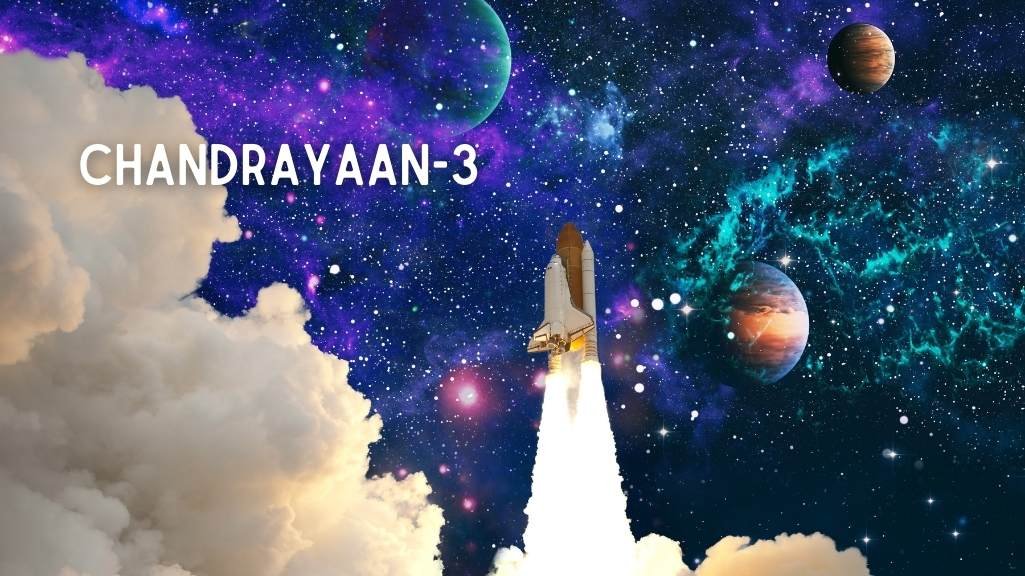Chandrayaan-3: India's Ambitious Lunar Mission for Scientific Exploration
Swati Mandana
. 2 min read
Chandrayaan-3 is India's third lunar mission, spearheaded by the Indian Space Research Organisation (ISRO). Building upon the success of its predecessors, Chandrayaan-1 and Chandrayaan-2, this ambitious space endeavor aims to further deepen our understanding of the Moon and expand India's capabilities in space exploration. With cutting-edge technology and advancements, the mission will not only conduct scientific analyses on the lunar surface but also engage in groundbreaking ventures like live video chat with astronauts, ushering in a new era of collaborative lunar exploration.

Background: The Chandrayaan Series
The Chandrayaan series has been instrumental in solidifying India's position in the global space community. Chandrayaan-1, launched in 2008, was India's first lunar mission and successfully discovered the presence of water molecules on the Moon's surface. Chandrayaan-2, launched in 2019, was a more complex mission with an orbiter, a lander (Vikram), and a rover (Pragyan). Though the lander faced a challenging descent and communication failure, the orbiter continues to provide valuable data and observations of the lunar surface.
Motivation and Objectives
The primary motivation behind Chandrayaan-3 is to rectify the landing setback experienced during Chandrayaan-2 and demonstrate India's capability to execute soft landings on the lunar surface. By doing so, the mission aims to further advance lunar exploration and contribute to scientific research.
The key objectives of Chandrayaan-3 include:
- Soft Landing: Chandrayaan-3 seeks to successfully land a rover on the Moon's surface, demonstrating India's prowess in soft landing technology.
- Lunar Surface Analysis: The rover will conduct on-site analyses of the lunar surface, studying the composition of rocks and regolith to gain insights into the Moon's geological history.
- Payloads and Instruments: Chandrayaan-3 will carry a suite of scientific instruments to analyze the lunar surface, enabling researchers to study the Moon's exosphere, mineralogy, and subsurface.
- Technology Demonstration: The mission will also serve as a platform to demonstrate and test new technologies for future lunar and interplanetary missions.
Mission Details
Chandrayaan-3 is anticipated to follow a similar architecture to Chandrayaan-2, consisting of an orbiter, a lander, and a rover. The orbiter will be responsible for communication with Earth, and it will continue to observe the Moon from above, capturing high-resolution images and collecting vital scientific data.
The lander, equipped with propulsion systems and landing sensors, will attempt a soft landing on the lunar surface. Once safely on the Moon, the rover will be deployed to explore the designated landing site and carry out its scientific investigations.
Collaborations and International Contributions
ISRO has a history of collaborating with other space agencies and international partners on various missions. While specific details regarding international collaborations for Chandrayaan-3 are yet to be disclosed, it is reasonable to assume that ISRO will continue to foster international cooperation to enhance the mission's scientific potential and share knowledge.
Conclusion
Chandrayaan-3 represents India's steadfast commitment to space exploration and scientific advancement. The mission seeks to build upon the successes of its predecessors, pushing the boundaries of India's space capabilities, and contributing to global scientific understanding of the Moon. As the mission unfolds, Chandrayaan-3 is expected to provide valuable data, inspire future generations of space enthusiasts, and elevate India's status in the realm of lunar exploration.
More Stories from
Space Shuttle is Rocket-Propelled Vehicle: Designed to Enter Orbit Around the Earth
This article provides an overview of the Space Shuttle program, including its development, notable missions, and major disasters.
Space Junk: An Overview of Human-Made Debris in Orbit
Space Junk: an overview of the problem and proposed solutions
Exploring the Final Frontier: A Glimpse into the World of Space Research
From probing distant galaxies with space telescopes to charting the potential for human life on other planets, this article provides a glimpse into the evolving field of space research.
Connected Cosmos: Embracing the Future of Space Exploration with Video Chat
Discover the potential for human colonization of other planets, breakthrough propulsion systems, and the expansion of our knowledge of the universe through space-based astronomy.
The Remarkable Lives of Katherine Johnson: From Child Prodigy to NASA Trailblazer
This article highlights the life and achievements of Katherine Johnson, a trailblazing mathematician








.png?width=40&aspect_ratio=1:1)


